All about Wood's ceropegia
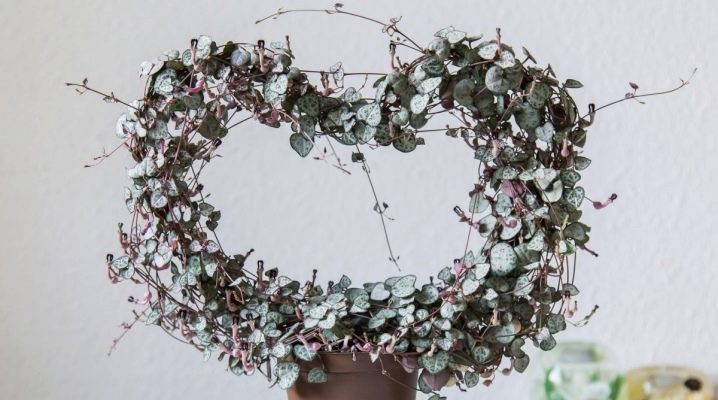
Ceropegia (Ceropegia) is a flowering plant that belongs to the order Kutrovye (Lastovnevy). Its name originates from the Greek word which translates as "candelabrum". This is explained by the unusual shape of the flowers. In the natural environment, the plant is found in the tropics of Asia and Africa, grows in Madagascar, New Guinea, Australia. Botanists have identified more than 180 species of ceropegia, some of which are successfully grown by flower growers.
Botanical description
Ceropegia is a herb that, depending on the variety, can be different: erect or creeping. The shoots of this plant are quite fleshy, and the leaves are lanceolate, heart-shaped, linear or ovoid. The plant has filamentous shoots. Ceropegia has several popular names: beach umbrella, snake vine, parachute, necklace, lantern flower and others. It can be supported with special ladders or other structures that wrap around the stems of the plant.

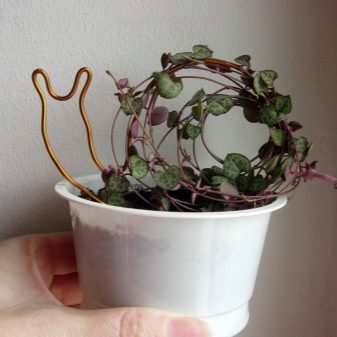
Ceropegia Woodii is named after the famous botanist John Medley Wood. It has fleshy foliage that can be 15 millimeters wide and approximately 20 millimeters long. The front surface of the leaf has a dark green color with a marble pattern, the back surface can be purple or greenish. From a distance, the flower looks like silver-green coins, which are strung on long chains.
Airy nodules of a yellowish color are formed on the plant. This happens during intensive growth. If the plant is kept in conditions of high humidity, then roots appear on the nodules, which can be used for the purpose of reproduction.
In the axils of the leaves, small flowers are formed with dark brown petals and a light-colored corolla. On the inner surface of the petals there is a pubescence of light pile. Flowering continues throughout the year, activity decreases slightly only in winter.

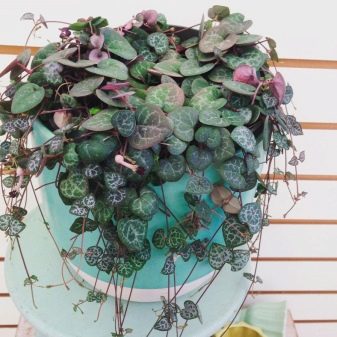
At home, the plant can grow up to 1.5 m or more in length.
Variegated ceropegia is a variegated version of the classic plant. The color can be purple-red, white-green or pink. The stems can grow up to 4 meters.
Some folk signs and superstitions are associated with this plant. For example, some people believe that cultivating ceropegia at home is not an option, as climbing plants make their way to the cemetery. They also say that such flowers can lead to failure and disease. In addition, they allegedly can cause quarrels and scandals in the family, contribute to divorce and separation.
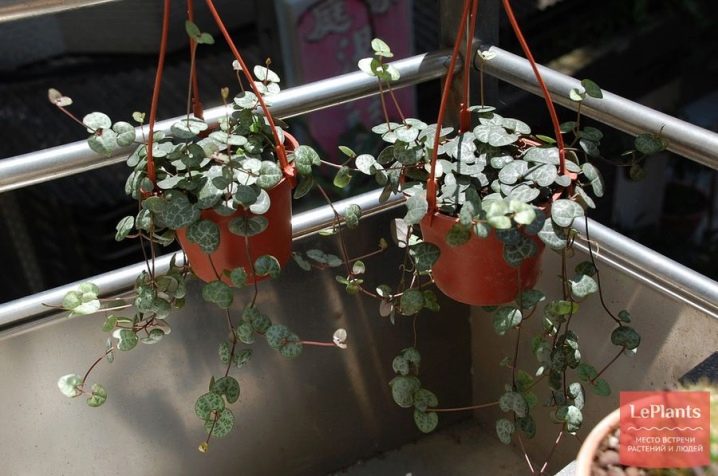
Varieties
Botanical scientists distinguish several varieties of Wood's ceropegia. Variety "Silver Glory" are distinguished by unusually attractive white leaves with a green border... Orange River Is another unusual variety of this plant. A little-known but interesting variety is Green Hearts... In addition, other varieties of this flower are grown: Simona, Durban, Ampliata and others.
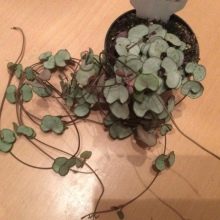
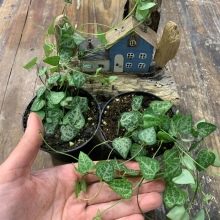
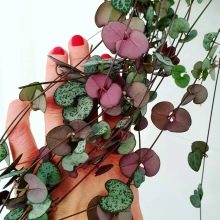
Growing and caring
At home, Wood's ceropegia is grown quite successfully. In this case, the humidity of the air can be absolutely any. However, ceropegia requires a lot of sunlight. During the summer noon hours, it is worth taking care of a little shading to avoid burns on the leaves. In insufficient light, the leaves become faded and small, their number decreases, and flowering may stop. So that flowering does not stop, the plant should be moved closer to the light source.
If the plant is properly cared for, then it can bloom almost all year round. However, the flowers cannot be called very decorative, so some growers simply remove the unattractive flowers. Ceropegia is grown primarily because of the beautiful foliage.
With flowering, difficulties almost never arise.
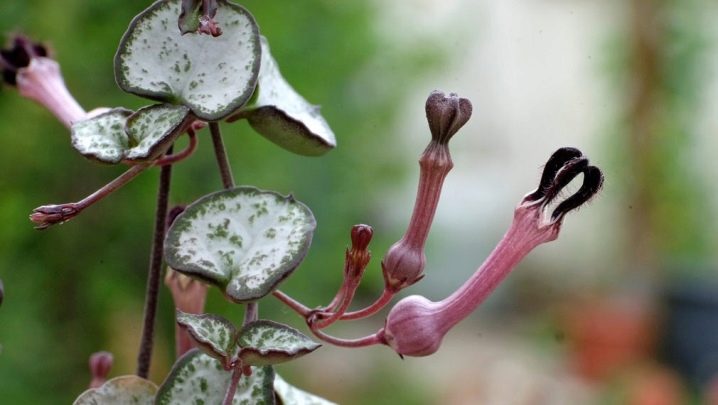
A comfortable temperature regime for a plant is 20-25 degrees Celsius. In winter, it is recommended to keep the flower cool, while the temperature can be 14-16 degrees, but not fall below 11 degrees. If the plant is kept at too low a temperature for a long time, it may die. The daily change of regime does not harm the flower.
A young plant requires an annual transplant, which is carried out in the spring, while it is necessary to replace the earthen mixture and flower pot. Adult ceropegia does not need to be transplanted so often. The procedure is carried out if necessary, that is, when the roots of the plant become too cramped in the container where it grows. The transfer is carried out using the transshipment method. This is a well-known and easy way to transplant a plant. In this case, it is required to shake off a small amount of the old soil mixture from the roots of Wood's ceropegia.
This plant is susceptible to fungal rot diseases.

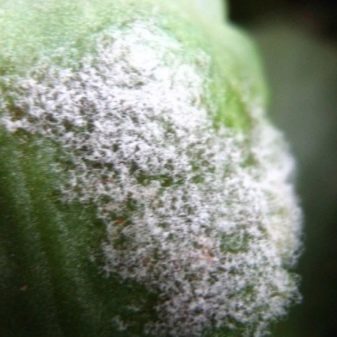
Location
Since the plant loves sunlight, it should be placed where there is good lighting. In the summer, Wood's ceropegia can be placed outdoors. If the bush is indoors, then it is imperative to provide regular ventilation.
If the plant is placed in a room with a very high temperature and dry air, then you can install a pallet with pebbles or peat, which will help create a stable external environment.
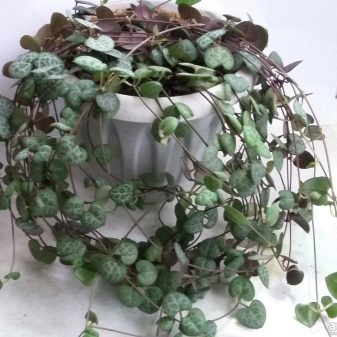
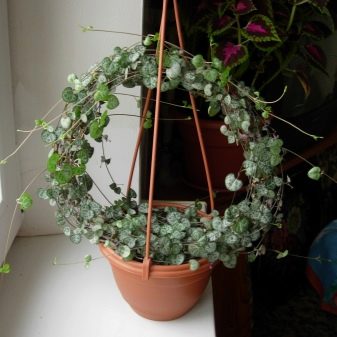
The soil
For planting Wood's ceropegia, you can use a ready-made soil mixture purchased in a specialized store, or prepare it yourself with your own hands. The plant prefers light soils without compaction. The best pH values for this species are 4.5-6.
Buying from the store requires a soil mixture designed for cacti. For greater efficiency, it is recommended to add a small amount of charcoal to the purchased mixture, which will further enrich the soil.
If you make an earthen mixture yourself, then to grow Wood's ceropegia, you need to combine leaf and sod soil in the same proportion, as well as humus and a small amount of sand. After mixing the soils, charcoal is added.
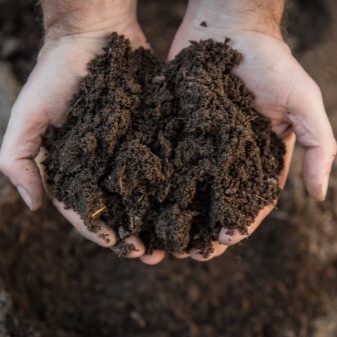
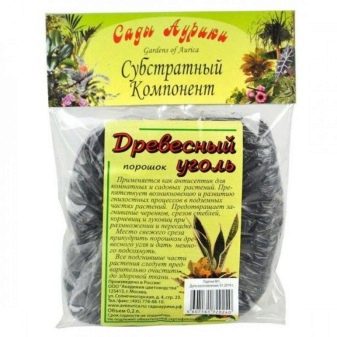
Disembarkation rules
To plant a flower, you must choose a wide, low pot; at the very bottom, you need to fill a high drainage layer. After the drainage layer, the pot must be covered with fresh soil mixture. The distance from the root to the sides of the pot should be 2 to 4 centimeters.
The flower can be planted together with other types of succulents, creating original complex compositions.
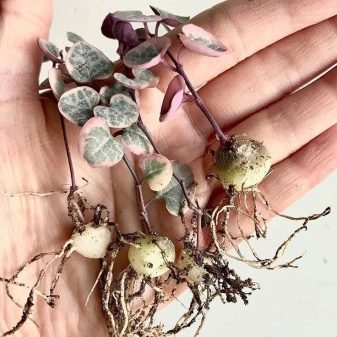
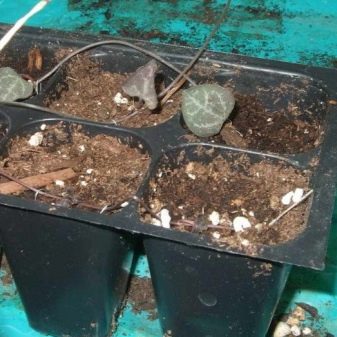
Watering
In spring and summer, this type of ceropegia needs to be watered moderately, watering is carried out immediately after the topsoil dries out. If excess water flows into the pan after watering, then it must be drained. With the onset of autumn, watering should be gradually reduced.
In winter, the plant does not require such frequent watering as in summer, it is enough to water it 2-3 days after the top soil layer dries. However, care must be taken to ensure that the ground does not dry out completely, otherwise this can lead to the fact that the root system of the plant may die. You do not need to use a humidifier spray.Even a single waterlogging can lead to the death of the bush.
Wood's ceropegia prefers bottom watering, it is necessary to avoid getting water drops on the nodules - this can cause rot. Do not use regular tap water for irrigation. It must first be defended or filtered. Watering is carried out only with water at room temperature.
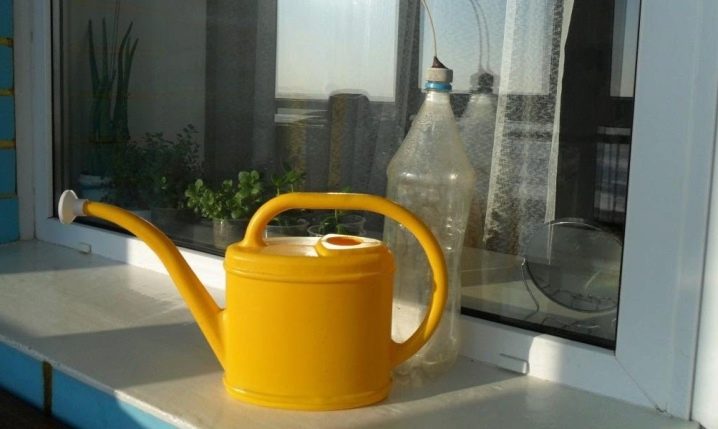
Fertilizer
Young bushes of Wood's ceropegia do not need to be additionally fed. This is due to the fact that they have enough nutrients that are still in the soil mixture. An adult plant needs to be fertilized regularly. The procedure is carried out only in spring and summer (once every 21-25 days).
For feeding, mineral fertilizers are used, which are used for succulents and all types of orchids. But at the same time, the dosage should be half of the dose recommended by the manufacturer. In late autumn and winter, no fertilization is required in the soil mixture.
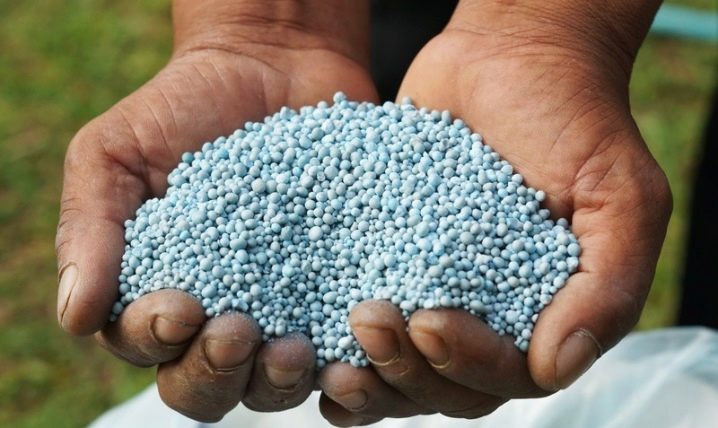
Pruning
Pruning of Wood's ceropegia stems is carried out in case of loss of leaves, loss of decorativeness or exposure of shoots.
After pruning is done, the plant will release new young shoots for replacement.
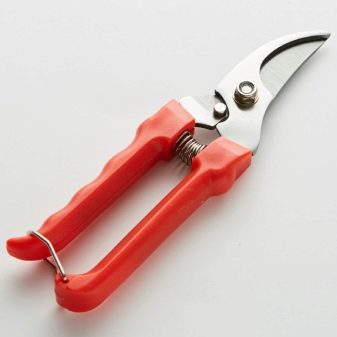
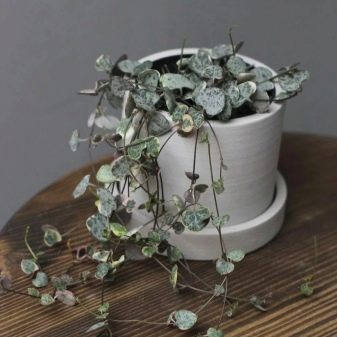
Reproduction
Wood's ceropegia reproduces in several different ways: by cuttings, seeds, tubers, or by dividing the rhizome.
For propagation using cuttings, you need to prepare them. It is carried out in early March, before the beginning of the intensive growth of the plant. To this end, it is necessary to cut off several stems of the plant and wither several of them, and then plant several pieces for rooting in a container. Then they should be watered moderately and placed in a cool place where the temperature should not exceed 20 degrees. In addition, the place where the seedling pot is located should be well lit. In this case, it is necessary to protect the cuttings from direct sunlight, in order to avoid the appearance of burns.
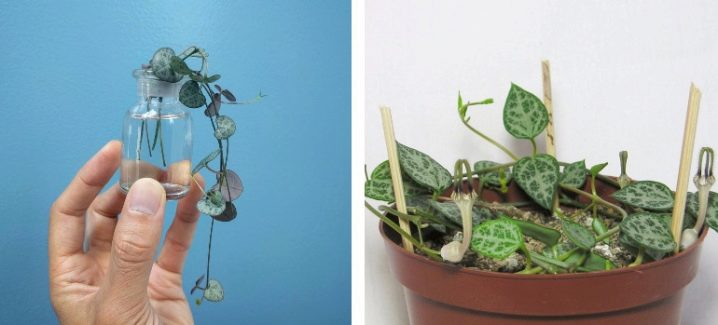
To propagate Ceropegia by seed, you need to fill the flowerpot with a suitable soil mixture and sow the seeds. Next, you need to sprinkle the seeds with a thin layer of the substrate. After that, the container must be covered. This can be done with film or glass, after which the container with seeds must be placed where there is enough warmth. The recommended temperature is at least 20 degrees, and the optimal one is 25 degrees. Until the emergence of shoots, it is necessary to carefully monitor so that the ground does not dry out and is constantly slightly damp.
Seedlings appear rather quickly. But according to individual containers, they can be planted only after the young seedlings get stronger and grow up. At the same time, caring for young plants is no different from caring for adults.
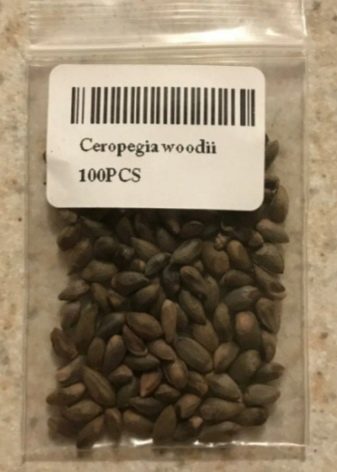
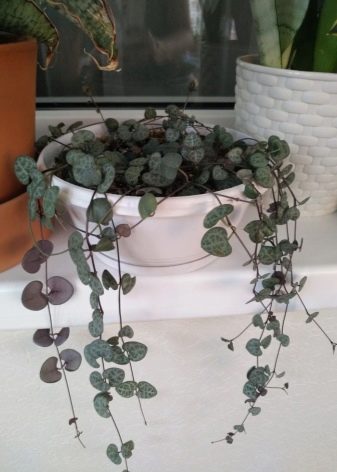
Wood's ceropegia can multiply with aerial tubers. To do this, the stem must be divided into several separate parts. This must be done in such a way that on each obtained segment there are at least two sheets, as well as nodules. Place the cut stems in the sand. They remain in the sand until roots emerge, after which they can be transplanted into flower pots with a suitable potting mix. To grow a dense, beautiful bush in one container, it is worth placing several cuttings with roots in one pot at the same time.
Another way of reproduction of Wood's ceropegia bushes is by dividing the rhizome of the plant. Usually, this method is implemented simultaneously with the transplantation of the bush. For this purpose, the plant, which has already been removed from the pot, must be divided into several approximately equal parts. After that, each of the separated bushes must be planted in a separate container.
In this case, there must be a drainage layer at the bottom of the pot.

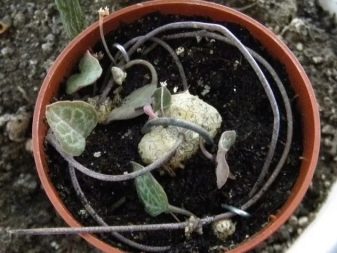
Wood's ceropegia outwardly seems to be a delicate and fragile plant, but in fact it is very hardy. This is a very convenient plant for growing at home. The flower does not require special care and is quite unpretentious, while it has a very attractive appearance.
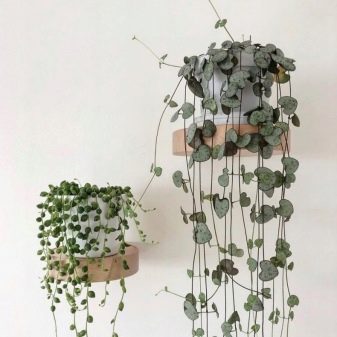
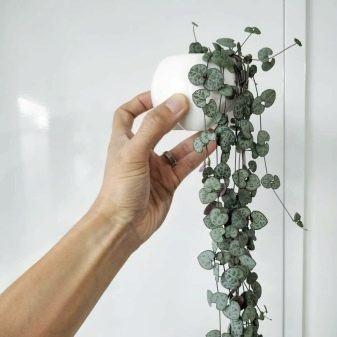













The comment was sent successfully.